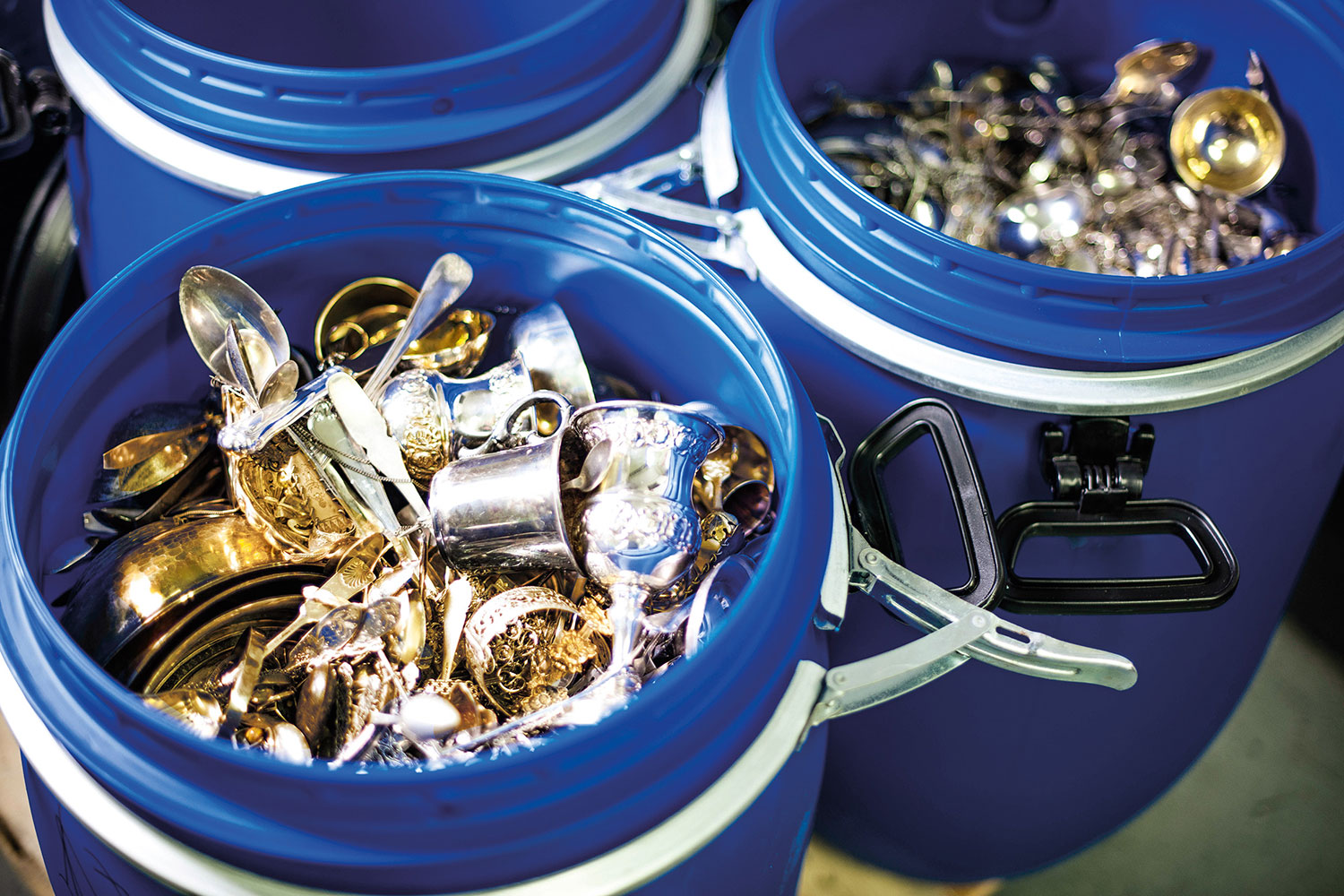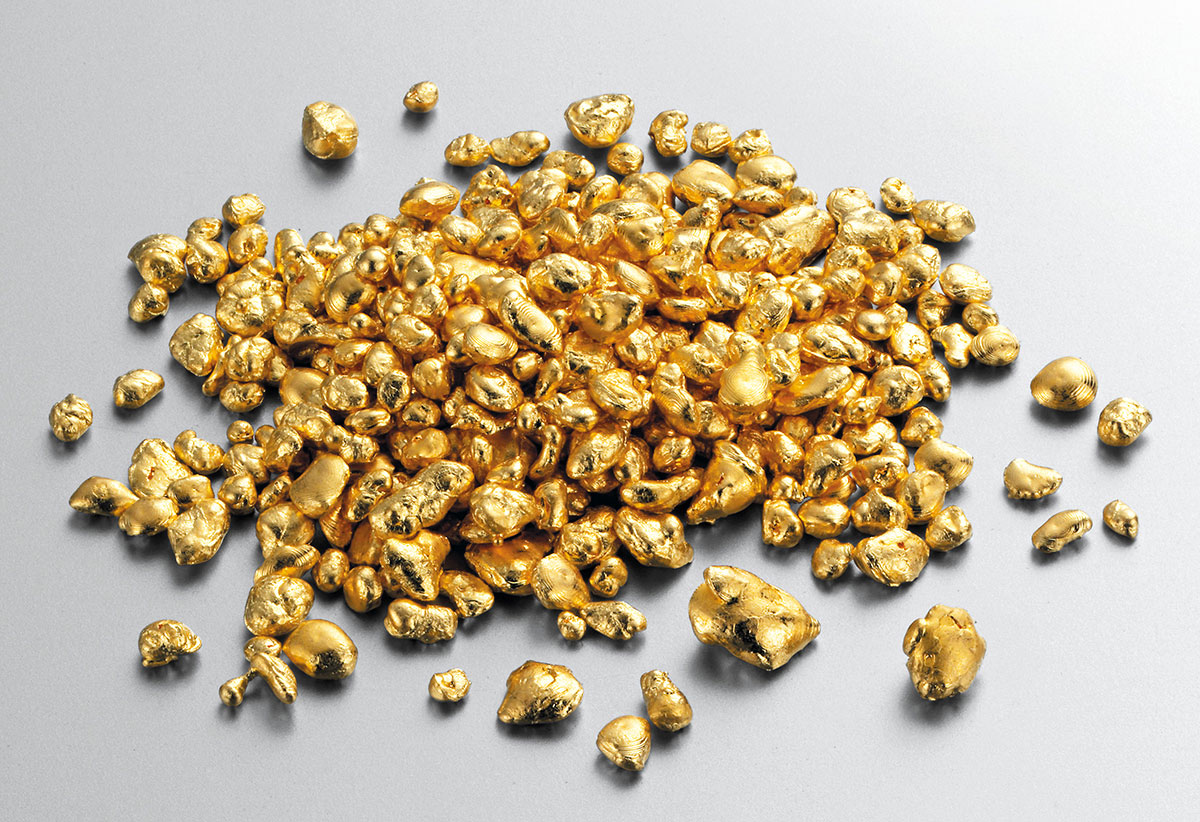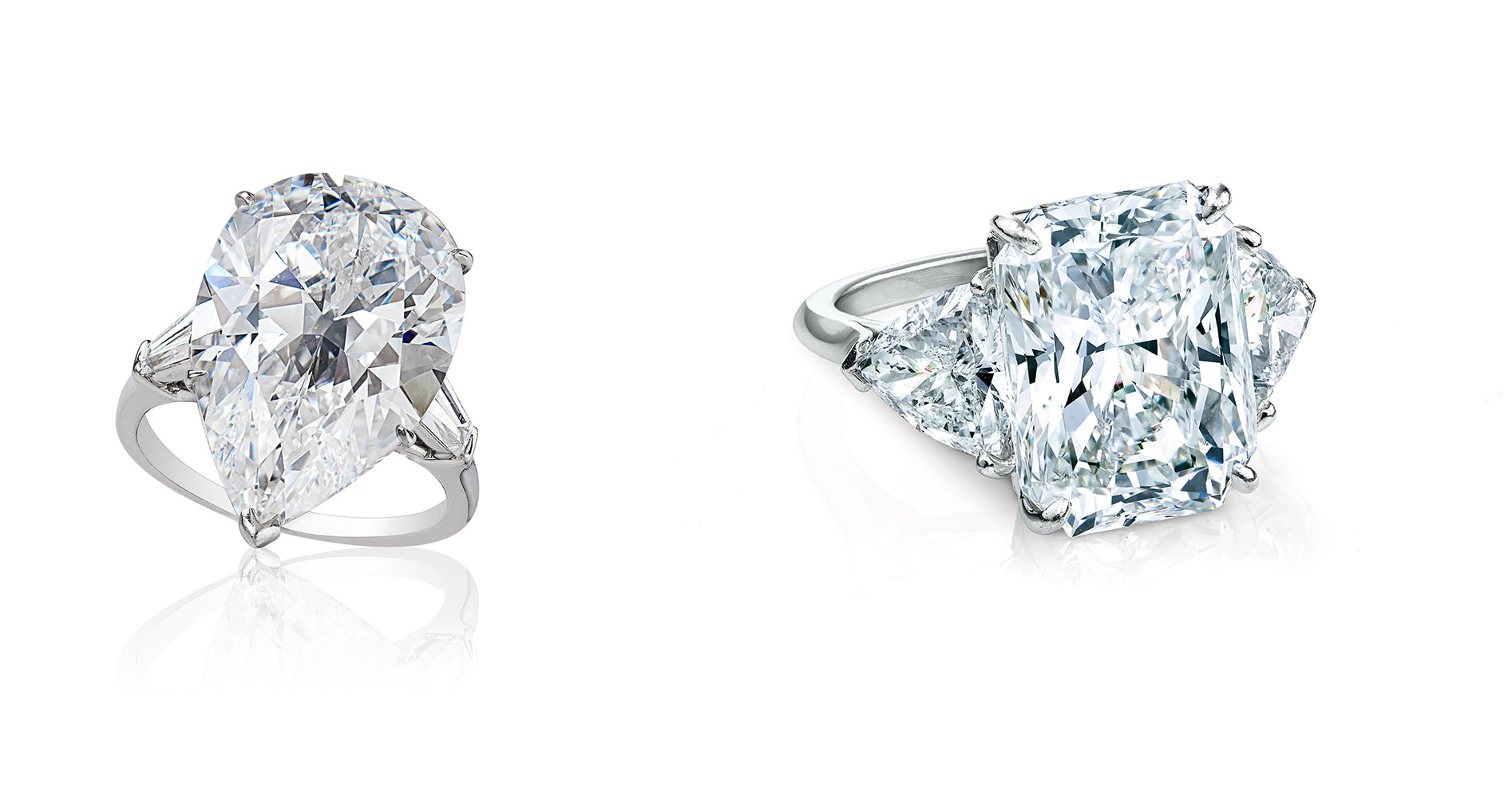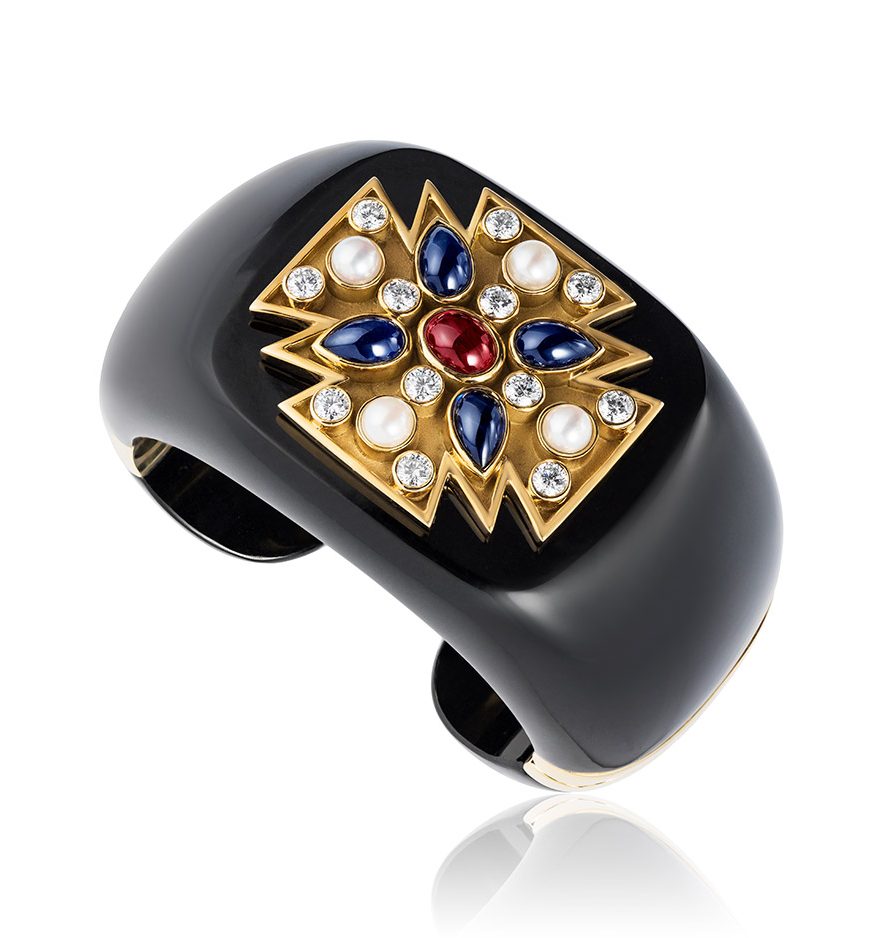Reduce, reuse, recycle…and resell and refine: Since consumption has reached an all-time high, environmental consciousness has never been more crucial. Here’s how to be a responsible retailer.
Last December, the international scientific journal Nature published a research paper with a startling headline: “Global human-made mass exceeds all living biomass.”
The paper quantified how in 2020, Earth reached a crossover point in which human-made mass, including buildings and infrastructure, now outweighs all the world’s trees and shrubs, and the planet’s plastic outweighs all the world’s animals.
At a time when we as a species consume more stuff than ever before, and throw it away faster than ever, the concept of a circular economy has gained currency as a potential solution to some of the world’s most urgent environmental issues, including waste management and biodiversity loss.
The idea addresses issues such as the climate crisis using a few strategies: eliminating waste and pollution, creating ongoing material and product flow and use, basing all infrastructure on renewable resources, and regenerating natural systems and habitats.
For the fine jewelry industry, circularity is, in one sense, an age-old concept: Precious materials, such as diamonds and gold, are rarely discarded; rather, they can be and are reused, one of the core tenets of the circular economy.
And yet there is always room for improvement. Below, we outline three ways jewelers can play their part.
Commit to using responsibly sourced and certified recycled gold.

There is no denying that gold mining is unsustainable. Gold, like all precious metals, is a finite resource. And all too often it originates in mines whose owners lack respect for natural habitats and local communities.
“To manufacture one 18 karat gold ring, there is a need for one ton of gold ore,” says Guya Merkle, founder of the Earthbeat Solutions Foundation, an organization that promotes ethical and environmentally sound gold mining and helps small-scale miners diversify their sources of income. “After purifying the ore, we end up with a lot of mining waste, wastewater, toxic chemicals, and more that are usually left at the mine. Without strong industry regulations regarding mines’ rehabilitation, there are giant pits in the earth surrounded by tons of mining waste.”
Recycled gold would seem to be a solution to the problems inherent with using newly mined gold, yet the topic is complex.
In a January 2020 episode of the McKinsey Podcast, Johannesburg-based gold expert Greg Callaway said that around 190,000 tons of gold are held above ground, while annual demand for gold totals about 4,000 to 4,500 tons. “About half of that [demand] comes through jewelry, and about two-thirds within that space is particularly linked to Chinese and Indian jewelry consumption,” Callaway said on the podcast. “Theoretically, you could have a situation in which no mined supply is needed, and all of your demand can be pulled from what’s being held in above-ground stocks.”
The lack of an organized international recycling system that incentivizes companies to use recycled gold may explain why the bulk of the industry still turns to newly mined gold. But for companies and consumers concerned about provenance, recycled gold itself can be problematic: The fact that gold has been recycled does not guarantee it didn’t come from dirty sources. Christina T. Miller, a sustainable-jewelry consultant based in College Corner, Ohio, says that “getting the reassurance that the recycled content is post-consumer recycled gold is the key.”

According to the Jewelry Glossary Project, the term post-consumer recycled, or PCR, refers to materials such as metals and gemstones recovered from used consumer products for reuse in new products. These recovered materials are critical to a circular economy because they have not contributed to the emissions associated with mining and processing virgin minerals.
“Make sure that the gold has been used at least once in a piece of jewelry [or] technical or medical equipment,” says Philipp Reisert, CEO of C. Hafner GmbH & Co., a precious-metal processing company based in Wimsheim, Germany.
Merkle offers a sobering comparison: “The same 18 karat gold ring that can be made from one ton of gold ore can be sourced responsibly from 40 used mobile phones,” she says.
So what can you do to source recycled gold in a way that benefits the circular economy? For starters, look to suppliers and refineries that have been certified by reputable standards organizations, such as the Responsible Jewellery Council, the London Bullion Market Association (LBMA), and SCS Global Services. Hoover and Strong, a U.S. jewelry supplier based in North Chesterfield, Va., offers 100% recycled gold, platinum, palladium, sterling silver, and fine silver in its Harmony range, which has been certified by SCS. Stuller, another American refiner, based in Lafayette, La., has earned a recycled content certification verified by an SCS audit, which ensures that all of its manufactured metals—gold, silver, platinum, and palladium—are 100% recycled. And United Precious Metal Refining, based near Buffalo, N.Y., offers 100% recycled fine gold and fine silver, verified by SCS.
Formalize the pre-owned jewelry market to help reduce manufacturing and waste.
The concept of a circular economy rides on a lot more than just recycling. Through prevention, reduction, and reuse, the industry as a whole needs to substantially reduce the amount of waste it generates.
Creating a more structured, formalized approach to the pre-owned jewelry category is one way to accomplish this. A 2020 Boston Consulting Group report found that “the market for secondhand hard luxury items—primarily watches and jewelry—is worth about” $24.4 billion worldwide. The report also wrote that the amount is increasing at a stunning 8% a year, and quicker than the overall luxury industry. “Moreover, this market is still in the early stages,” the report continued, “creating an opportunity for brands and retailers to take proactive steps to shape demand and stake their claim.” Another important finding: Consumers today “expect luxury brands and retailers to get involved in secondhand sales,” giving resale an alluring sense of exclusivity.

Over the past five years, the luxury watch business has seen skyrocketing growth in sales of certified pre-owned timepieces. Take WatchBox, for example. The Philadelphia-based pre-owned watch e-tailer announced in November that it had received $165 million in funding, in a round led by the Radcliff Companies and the Spruce House Partnership, joined by CMIA Capital Partners. This is just one example of the soaring interest in secondhand watches, both on the part of consumers and the trade, with many advocates citing sustainability and circularity as reasons to support the category.
The jewelry industry, however, has been slower to recognize the power of pre-owned. Circa, a New York City–based company that specializes in reselling used diamonds, fine jewelry, and watches, is a notable exception. “The expansion of the circular economy into multiple areas of day-to-day life is an inevitable reality, and jewelry will be no different,” says Circa CEO Oren Schneider. “We will see more pre-owned products both finding their way to retail or sold more systematically back into reproduction. We will see large brands, both wholesale and retail, develop assortment strategies that integrate pre-owned materials and finished products.”
Communicate the benefits of the circular economy to consumers.
Some jewelry brands have found success by adopting, and promoting, circular practices to their customers.
In July, Sauer, a family-owned Brazilian jewelry brand, launched a campaign called Reset, offering existing clients the opportunity to exchange gold jewels for store credit with a 20% bonus over that day’s gold price. The company plans to repeat the campaign every July. “Creating these unique opportunities for our customers to participate in sustainable and circular practices is key,” says managing director Gabriel Andre Sauer.

Initially, the company hesitated to create the campaign because “we had concerns about impacting the brand’s exclusivity,” Sauer says. “The 20% bonus changed the perception of a possible devaluation, and it gave a clear incentive to our clients to make the exchange.”
Most companies, however, have not yet incentivized their clients to bring back unwanted items so the materials can be reused, although there is a clear economic value in these minerals.
“From my experience, the locomotive here is retail,” Schneider says. “Once consumer-facing businesses crack the code and build compelling and desirable propositions, the entire supply chain will seamlessly align. Communicating the benefits of circular jewelry to consumers is the first step.”
Companies might consider disclosing carbon footprints and other data points such as the amount of waste generated per piece of jewelry to reach a younger audience, Reisert says. Communicating circularity to consumers also means avoiding marketing tools that undermine the cause—for example, ditching catalogs printed on virgin paper and new store displays in favor of PCR materials and digital promotions.
In the end, it’s important to recognize that circularity is holistic: The many facets of the jewelry industry must work in concert to reach the same goal. Whether that’s developing an organized international recycling system, reskilling and upskilling small-scale miners dependent on traditional mining to ensure they don’t lose their livelihoods, collaborating with other industries dependent on the same precious minerals for more efficient cross-industry recycling, or designing products while taking into account their life cycles—only a 360-degree shift can lead to a truly circular future.
Homepage: Art Deco diamond, emerald, and sapphire bracelets, prices on request; Circa; top: Verdura Maltese cross cuff bracelet, price on request; Circa (photos courtesy of Circa)
